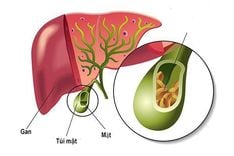This article was professionally consulted by Vu Van Quan MSc, MD, Deputy Head of the General Surgery Department—General Surgery & Anesthesia Department—Vimec Hai Phong International General Hospital.
Splenic artery aneurysm is an uncommon type of aneurysm with a rather high fatality rate. A simple splenic artery aneurysm produces no clinical symptoms; the aneurysm is frequently identified unintentionally while checking the abdomen for another abnormalities. The most alarming consequence is the rupture of the splenic artery aneurysm, which results in extensive bleeding into the peritoneum or surrounding organs.
1. What is a splenic arterial aneurysm?
Splenic artery aneurysm is an uncommon clinical condition that is frequently detected unintentionally while studying abdominal imaging or performing an autopsy on a corpse for other reasons. Splenic artery aneurysms have an average incidence of 0.1% and can occur at any age, however they are more common in those over 50. Women are more likely than men to develop splenic artery aneurysms, particularly in the second half of their pregnancy. A typical and severe complication of splenic artery aneurysm is rupture, which causes significant bleeding in the abdomen and leads to hemorrhagic shock. Splenic artery aneurysm rupture occurs for approximately 3% to 10% of cases. A few occurrences of splenic artery aneurysm rupture have been reported in pregnant women, with maternal and fetal death rates exceeding 80%. Pregnant women with splenic artery aneurysms may face aneurysm rupture after pregnancy. Hypertension is a risk factor of splenic artery aneurysm rupture.

2. The causes of splenic artery aneurysm.
There are numerous causes of splenic artery aneurysms, but the exact mechanism remains unknown. The following conditions can induce a splenic artery aneurysm:
- Congenital vascular anomalies
- Thrombosis of the spleen arteries and veins
- Atherosclerosis
- Pregnancy
- Portal hypertension
- Chronic pancreatitis
- Some poisons that damage the vascular wall.
Splenic artery aneurysms can be caused by a variety of factors, however they are not always present. Patients with splenic artery aneurysms should be prioritized for early detection and treatment rather than looking for the cause.
3. Signs of a splenic artery aneurysm
Uncomplicated splenic artery aneurysms frequently have no clinical signs. So, patients have no problem living with their aneurysm. If the splenic aneurysm is excessively big, the patient may experience dull abdominal pain.

Aneurysm rupture is often sudden. The most noticeable symptom of a ruptured aneurysm is sudden, intense abdominal pain. If not diagnosed and treated promptly, the patient will go into shock as a result of severe blood loss. Cool, clammy skin, Impaired consciousness, and blood pressure fluctuations are all indications of shock. Examination of the patient may reveal shifting dullness and rebound tenderness. Some cases have reported ruptured splenic aneurysms, resulting in bleeding into abdominal organs such as the pancreas, stomach, and colon.
4. Splenic aneurysm diagnosis
The diagnosis of splenic artery aneurysm is achieved via imaging techniques. Images of the splenic artery aneurysm are analyzed to evaluate the aneurysm's anatomy, dimensions, localization, and the extent of compression on nearby organs. Rupture of the splenic artery aneurysm results in hemorrhage within the peritoneal cavity, as confirmed by imaging modalities.
The two most popular imaging modalities for diagnosing splenic aneurysms in clinical practice are abdominal ultrasound and abdominal computed tomography. Typically, people see their doctor for another medical issue and are unintentionally diagnosed with a splenic aneurysm. Imaging techniques can also detect some causes of aneurysms. Some frequent tests to determine the level of blood loss and associated issues include blood count, blood type test, basic coagulation function, blood urea creatinine, and so on.

5. Treatment for splenic aneurysm rupture
Splenic aneurysm rupture is a life-threatening emergency, so treatment involves the collaboration of multiple disciplines. The main treatment aims include circulatory resuscitation, blood loss replacement, and the resolution of aneurysm occlusion. Patients are given fluid resuscitation, blood transfusions, oxygen therapy, and monitoring and maintenance of vital signs. Previously, surgery was the primary treatment for splenic artery aneurysms and complications. However, the success rate of this method was low, with more than half of patients dying from severe blood loss.
With the advancement of medical knowledge and technology, patients with aneurysms can now be treated using vascular intervention methods guided by a monitor fluoroscopy. This is a minimally invasive procedure that may be completed rapidly, making it more beneficial in cases of acute aneurysm rupture. Aneurysmectomy is performed when vascular intervention fails and the patient continues to bleed intra-abdominal with no improvement in clinical symptoms. If a splenic rupture is present, a splenectomy can be performed concurrently with the surgery. Furthermore, surgery has shown to be more beneficial in extreme situations, such as splenic artery aneurysms that rupture into other organs.
To arrange an appointment, please call HOTLINE or make your reservation directly HERE. You may also download the MyVinmec app to schedule appointments faster and manage your reservations more conveniently.








